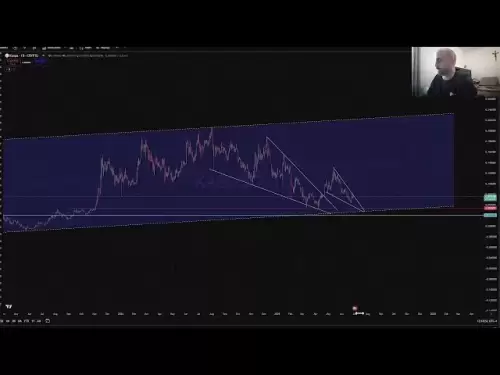-
 Bitcoin
Bitcoin $107,341.7259
0.15% -
 Ethereum
Ethereum $2,438.6204
0.70% -
 Tether USDt
Tether USDt $1.0003
-0.02% -
 XRP
XRP $2.1866
1.94% -
 BNB
BNB $649.0952
0.36% -
 Solana
Solana $150.9602
5.63% -
 USDC
USDC $0.9999
0.00% -
 TRON
TRON $0.2742
0.40% -
 Dogecoin
Dogecoin $0.1645
1.93% -
 Cardano
Cardano $0.5669
1.18% -
 Hyperliquid
Hyperliquid $37.8286
4.19% -
 Bitcoin Cash
Bitcoin Cash $491.4669
-2.74% -
 Sui
Sui $2.8150
3.06% -
 Chainlink
Chainlink $13.4184
2.91% -
 UNUS SED LEO
UNUS SED LEO $9.0809
0.27% -
 Avalanche
Avalanche $18.0295
2.60% -
 Stellar
Stellar $0.2396
1.19% -
 Toncoin
Toncoin $2.8587
0.13% -
 Shiba Inu
Shiba Inu $0.0...01160
2.59% -
 Litecoin
Litecoin $86.4192
1.45% -
 Hedera
Hedera $0.1486
1.19% -
 Monero
Monero $308.4324
0.87% -
 Polkadot
Polkadot $3.4202
1.43% -
 Bitget Token
Bitget Token $4.6436
-0.34% -
 Dai
Dai $0.9998
-0.02% -
 Ethena USDe
Ethena USDe $1.0002
0.00% -
 Uniswap
Uniswap $7.1527
3.29% -
 Pi
Pi $0.5357
-8.45% -
 Pepe
Pepe $0.0...09588
4.61% -
 Aave
Aave $259.9759
0.81%
What is the transaction fee of USDT?
USDT transaction fees are dynamic, varying by platform, blockchain (e.g., Ethereum, Tron), and network congestion. Understanding these factors is crucial for cost-effective transfers.
Mar 11, 2025 at 07:45 pm
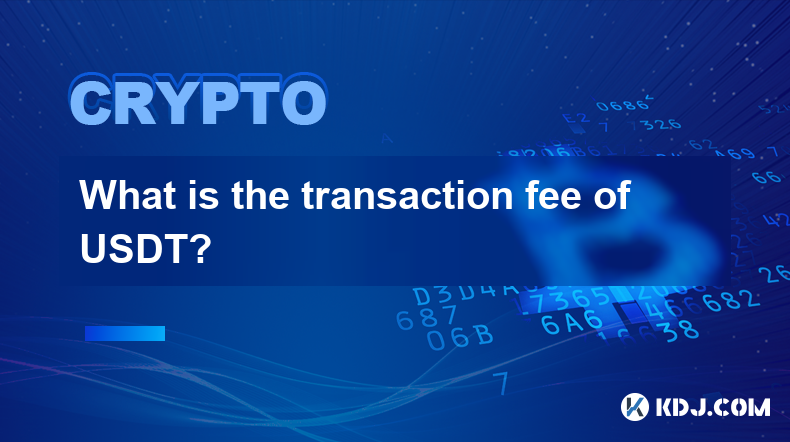
Key Points:
- USDT transaction fees vary significantly depending on the platform used for the transaction.
- Fees are influenced by network congestion and the chosen transaction speed.
- Understanding the fee structure is crucial for maximizing cost-effectiveness.
- Different blockchains supporting USDT (e.g., Ethereum, Tron, Omni) have varying fee structures.
- Exchanges often add their own fees on top of the network fees.
What is the transaction fee of USDT?
The transaction fee for USDT, a popular stablecoin pegged to the US dollar, isn't a fixed amount. It fluctuates based on several factors, making it difficult to give a single definitive answer. The cost depends heavily on the blockchain network utilized for the transaction and the specific platform facilitating the transfer. Understanding these nuances is crucial for managing your expenses when dealing with USDT.
Blockchain Network Fees:
USDT operates on several blockchains, each with its own fee structure. The most common are Ethereum (ERC-20), Tron (TRC-20), and Omni Layer (on Bitcoin). Ethereum's fees, notorious for their volatility, are generally higher than those on Tron or Omni. This volatility is directly tied to network congestion. When the network is busy, transaction fees surge. Conversely, during periods of low activity, fees decrease. Tron and Omni often offer significantly lower fees compared to Ethereum.
Exchange Fees:
Beyond network fees, cryptocurrency exchanges add their own transaction fees. These fees can vary widely from exchange to exchange. Some exchanges might charge a percentage of the transaction value, while others might use a flat fee structure. It's essential to check the specific fee schedule of your chosen exchange before initiating any USDT transfer. This fee is in addition to the network fee, increasing the overall cost.
Transaction Speed and Fees:
The speed at which you want your transaction to be processed also influences the fee. Faster transactions generally incur higher fees. This is because miners prioritize transactions with higher fees, ensuring quicker processing times. If you're not in a hurry, choosing a slower transaction speed can lead to significant cost savings. However, this trade-off requires patience.
Calculating the Total Fee:
To determine the total fee, you need to consider both the network fee and the exchange fee. The network fee is usually displayed before you confirm the transaction on your chosen platform. The exchange fee is typically listed in the exchange's fee schedule or displayed during the transaction process. Adding these two components gives you the total cost of your USDT transaction.
Minimizing USDT Transaction Fees:
Several strategies can help minimize USDT transaction fees.
- Choose the right blockchain: Opting for Tron (TRC-20) or Omni Layer often results in lower fees compared to Ethereum (ERC-20).
- Time your transactions: Conducting transactions during periods of low network activity on Ethereum can significantly reduce fees.
- Compare exchange fees: Before choosing an exchange, carefully compare their fee structures to find the most cost-effective option.
- Use batch transactions (where applicable): Some platforms allow combining multiple transactions into one, potentially reducing the per-transaction cost.
- Consider layer-2 solutions: Solutions like Polygon or Arbitrum, which operate on top of Ethereum, can offer significantly lower transaction fees.
Step-by-Step Example (Illustrative):
Let's say you're transferring USDT from Exchange A to Exchange B.
- Step 1: Check Exchange A's fee schedule for outgoing USDT transfers. Let's assume it's 0.1% of the transaction amount.
- Step 2: Select the blockchain network (e.g., TRC-20).
- Step 3: The platform will display the estimated network fee for TRC-20. Let's say it's $0.05.
- Step 4: Transfer your USDT. The total fee will be the exchange fee (0.1% of your transaction amount) plus the network fee ($0.05).
Common Questions:
Q: Are USDT transaction fees the same across all exchanges?
A: No, transaction fees vary significantly depending on the exchange. Each exchange sets its own fee structure, and some may also charge different fees depending on the payment method used.
Q: How can I find the current USDT transaction fee?
A: The current fee isn't a single number. It depends on the blockchain and the current network congestion. Check the specific platform (exchange or wallet) you're using; they usually display an estimated fee before you confirm the transaction.
Q: Is it cheaper to transfer USDT on Tron (TRC-20) or Ethereum (ERC-20)?
A: Generally, TRC-20 transactions are significantly cheaper than ERC-20 transactions due to lower network fees on the Tron blockchain. However, always check current network conditions as fees can fluctuate.
Q: What happens if I don't have enough funds to cover the transaction fee?
A: The transaction will fail. Ensure you have sufficient USDT to cover both the transfer amount and the associated fees before initiating the transaction.
Q: Are there any hidden fees associated with USDT transfers?
A: While major exchanges are transparent, always double-check the fee structure. Some platforms might have additional fees for certain transaction types or features. Read the terms and conditions carefully.
Disclaimer:info@kdj.com
The information provided is not trading advice. kdj.com does not assume any responsibility for any investments made based on the information provided in this article. Cryptocurrencies are highly volatile and it is highly recommended that you invest with caution after thorough research!
If you believe that the content used on this website infringes your copyright, please contact us immediately (info@kdj.com) and we will delete it promptly.
- XRP, Ripple, and Bitcoin: Decoding the Latest Crypto Moves
- 2025-06-29 08:30:13
- NBA Legend Scottie Pippen's Crypto Picks: SHIB and XRP in the Spotlight
- 2025-06-29 08:50:12
- Bitcoin, US Strategy, and Cryptocurrency Regulation: Navigating the Digital Frontier
- 2025-06-29 09:10:13
- Chainlink's $17 Breakout: Bullish Momentum Fueled by Mastercard Partnership
- 2025-06-29 08:30:13
- Crypto Launches Q3 2025: Top Picks to Watch
- 2025-06-29 09:10:13
- BTC Bull Token: Riding Bitcoin's Bull Run to Crypto Glory
- 2025-06-29 09:30:11
Related knowledge
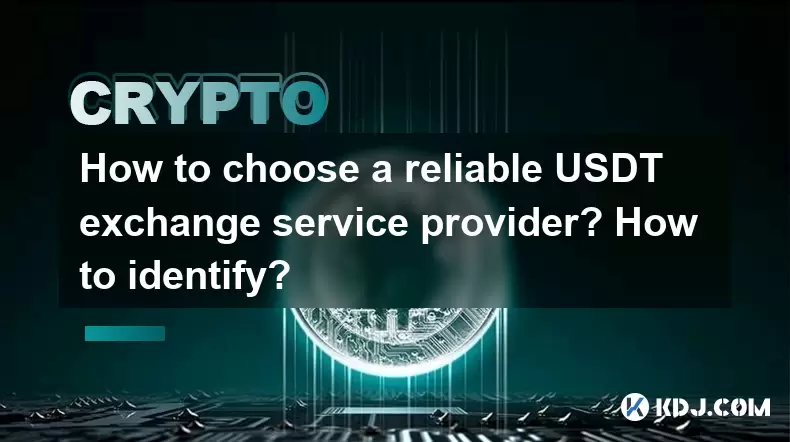
How to choose a reliable USDT exchange service provider? How to identify?
Jun 12,2025 at 03:15pm
Understanding the Role of USDT in Cryptocurrency TradingUSDT (Tether) is one of the most widely used stablecoins in the cryptocurrency market. It is designed to maintain a 1:1 peg with the U.S. dollar, offering traders and investors a way to hedge against volatility while remaining within the crypto ecosystem. Choosing a reliable USDT exchange service p...
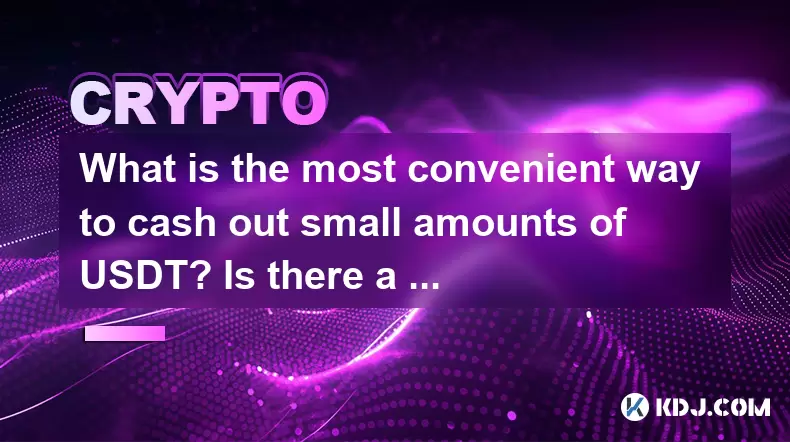
What is the most convenient way to cash out small amounts of USDT? Is there a shortcut?
Jun 11,2025 at 11:00pm
Understanding the Need to Cash Out Small USDT AmountsCashing out small amounts of USDT can be a challenge for many crypto users. Traditional methods often involve high fees, minimum withdrawal limits, or cumbersome verification processes that make it inefficient for small transactions. The key is to find a method that balances speed, cost, and convenien...
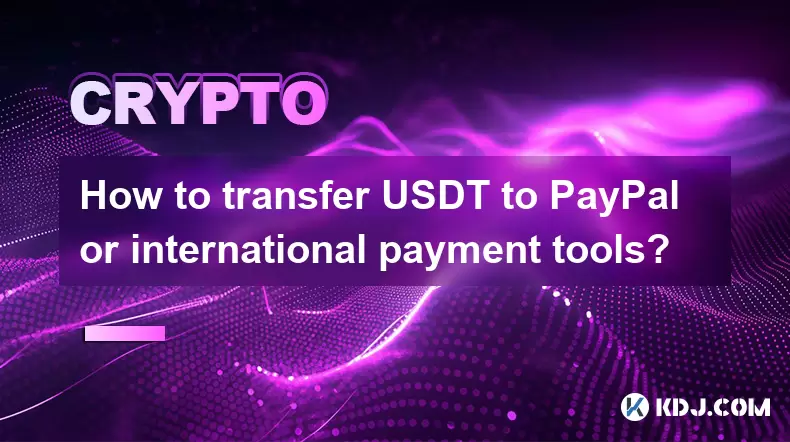
How to transfer USDT to PayPal or international payment tools?
Jun 15,2025 at 05:28am
Understanding the Basics of USDT and PayPal IntegrationUSDT (Tether) is a stablecoin pegged to the US dollar, offering blockchain-based value transfer with minimal volatility. PayPal, on the other hand, is a centralized digital wallet that facilitates fiat currency transactions globally. Direct integration between USDT and PayPal does not exist due to t...
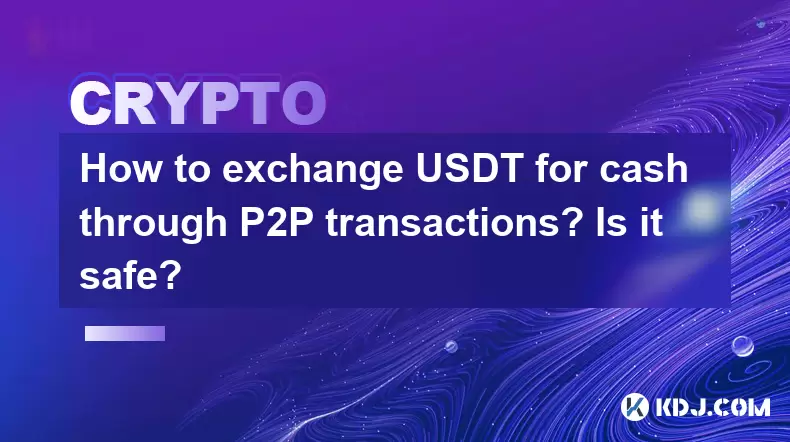
How to exchange USDT for cash through P2P transactions? Is it safe?
Jun 18,2025 at 07:56am
Understanding USDT and P2P TransactionsTether (USDT) is a stablecoin pegged to the value of the US dollar, making it a popular choice for users who want to avoid the volatility of other cryptocurrencies while still participating in the crypto ecosystem. Peer-to-peer (P2P) transactions allow individuals to trade directly with each other without going thr...
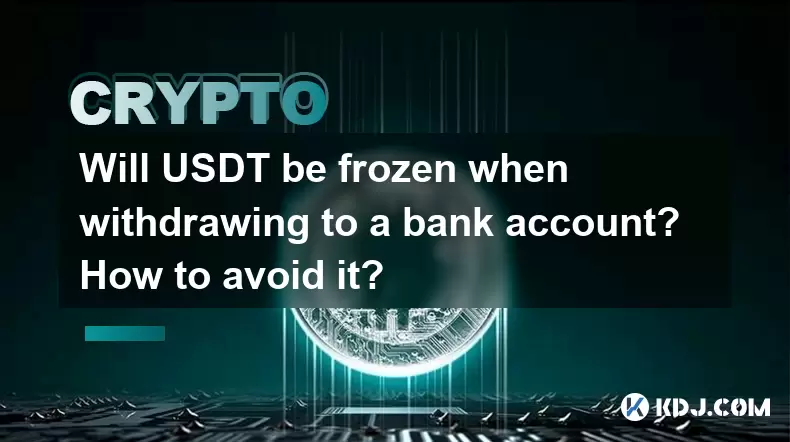
Will USDT be frozen when withdrawing to a bank account? How to avoid it?
Jun 15,2025 at 10:03am
Understanding USDT Withdrawals and Bank Account Freezing RisksWhen users decide to withdraw USDT (Tether) to a bank account, one of the most common concerns is whether their funds will be frozen during the process. This concern stems from real-life cases where individuals have encountered delays or restrictions when converting digital assets into fiat c...

How to avoid risks when exchanging USDT for cash? What are the pitfalls?
Jun 11,2025 at 08:14pm
Understanding the Risks of Exchanging USDT for CashWhen exchanging USDT (Tether) for cash, users must be aware of the potential risks involved. As a stablecoin pegged to the US dollar, USDT is widely used in crypto transactions due to its price stability. However, converting it into fiat currency like USD or CNY can expose users to several pitfalls, inc...

How to choose a reliable USDT exchange service provider? How to identify?
Jun 12,2025 at 03:15pm
Understanding the Role of USDT in Cryptocurrency TradingUSDT (Tether) is one of the most widely used stablecoins in the cryptocurrency market. It is designed to maintain a 1:1 peg with the U.S. dollar, offering traders and investors a way to hedge against volatility while remaining within the crypto ecosystem. Choosing a reliable USDT exchange service p...

What is the most convenient way to cash out small amounts of USDT? Is there a shortcut?
Jun 11,2025 at 11:00pm
Understanding the Need to Cash Out Small USDT AmountsCashing out small amounts of USDT can be a challenge for many crypto users. Traditional methods often involve high fees, minimum withdrawal limits, or cumbersome verification processes that make it inefficient for small transactions. The key is to find a method that balances speed, cost, and convenien...

How to transfer USDT to PayPal or international payment tools?
Jun 15,2025 at 05:28am
Understanding the Basics of USDT and PayPal IntegrationUSDT (Tether) is a stablecoin pegged to the US dollar, offering blockchain-based value transfer with minimal volatility. PayPal, on the other hand, is a centralized digital wallet that facilitates fiat currency transactions globally. Direct integration between USDT and PayPal does not exist due to t...

How to exchange USDT for cash through P2P transactions? Is it safe?
Jun 18,2025 at 07:56am
Understanding USDT and P2P TransactionsTether (USDT) is a stablecoin pegged to the value of the US dollar, making it a popular choice for users who want to avoid the volatility of other cryptocurrencies while still participating in the crypto ecosystem. Peer-to-peer (P2P) transactions allow individuals to trade directly with each other without going thr...

Will USDT be frozen when withdrawing to a bank account? How to avoid it?
Jun 15,2025 at 10:03am
Understanding USDT Withdrawals and Bank Account Freezing RisksWhen users decide to withdraw USDT (Tether) to a bank account, one of the most common concerns is whether their funds will be frozen during the process. This concern stems from real-life cases where individuals have encountered delays or restrictions when converting digital assets into fiat c...

How to avoid risks when exchanging USDT for cash? What are the pitfalls?
Jun 11,2025 at 08:14pm
Understanding the Risks of Exchanging USDT for CashWhen exchanging USDT (Tether) for cash, users must be aware of the potential risks involved. As a stablecoin pegged to the US dollar, USDT is widely used in crypto transactions due to its price stability. However, converting it into fiat currency like USD or CNY can expose users to several pitfalls, inc...
See all articles























